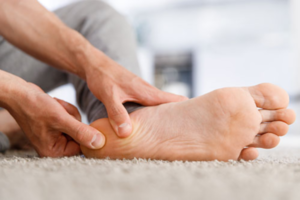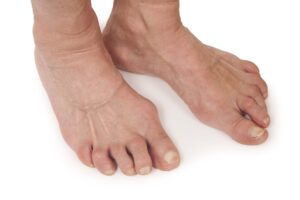
Hip Dysplasia: A Guide for Parents and Adults
Hip dysplasia (developmental dysplasia of the hip – DDH) is a condition that affects the hip joint.

What is Peripheral Neuropathy?
Peripheral neuropathy refers to the many conditions that involve damage to the peripheral nervous system, the vast communication network that sends signals between the central nervous system (the brain and spinal cord) and all other parts of the body. Peripheral nerves send many types of sensory information to the central nervous system (CNS), such as a message that the feet are cold.
Signs and symptoms of Peripheral Neuropathy
Symptoms are related to the fibres effected.
Diabetes and Peripheral Neuropathy
Peripheral neuropathy is the most common type of neuropathy, and is experienced by approximately 50% of diabetic patients suffering from neuropathy. Diabetic neuropathy also appears to be more common in males than females. Painful diabetic neuropathy affects approximately one quarter of patients with diabetes. Diabetic neuropathy also appears to be more common in people who have problems controlling their blood glucose levels, in those with high levels of cholesterol and high blood pressure, in overweight people, and in people over the age of 40.
Peripheral Neuropathy and the feet
Loss of protective sensation can lead to severe consequences for the patient with diabetes, especially in the feet and legs. The cumulative effect of unrecognized recurrent minor trauma, delayed care of injury, and poor wound healing leads to chronic soft tissue wounds that threaten the viability of the foot and even the leg. Diabetic foot ulcers begin with the inability to feel normal sensations, such as pressure and pain. Loss of protective sensation leads to increased damage to the skin due to prolonged pressure that does not result in the normal response to a painful stimulus. When there are areas of callused skin due to either foot deformities or excessive shear pressure (i.e., blister formation), ischemic changes from initial skin damage lead to further insult, resulting in erosion of the epidermis and dermis. Diabetic foot ulcers precede more than 80% of non-traumatic lower limb amputations. The most common sites for foot ulcers are toes, followed by the plantar metatarsal heads and the heel. Foot risk factors include peripheral neuropathy, peripheral arterial disease, and foot deformities.
Screening and Assessment of Peripheral Neuropathy
Any patient who begins to exhibit foot deformity or symptoms of neuropathy should be referred to a podiatrist to establish baseline foot care and evaluation. These visits can prevent problems down the line and educate the patient about necessary foot care. The sooner the patient is evaluated, the more likely that severe foot complications will be avoided. However, prevention is the best treatment. Typically, a patient with neuropathy should be seen by a podiatrist every six months, and sometimes sooner if they exhibit progression of their disease or have any severe foot deformity.
If you have been recently diagnosed with peripheral neuropathy or have any questions or concerns, please feel free to visit us in the clinic and we will be more than happy to answer your questions.
Thanks for reading and as always stay safe,
Richard
Sole-Lution Podiatry

Hip dysplasia (developmental dysplasia of the hip – DDH) is a condition that affects the hip joint.

Heel pain can be a real drag, especially when that first step in the morning feels like stepping on a tack. One culprit behind this discomfort can be heel spurs. But what exactly are they, and more importantly, how can you fix them?

Arthritis in the feet can significantly disrupt your daily life, turning simple walks into painful struggles.